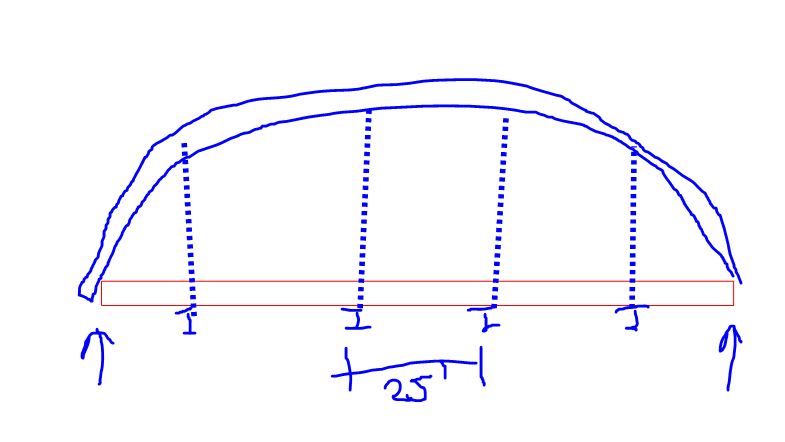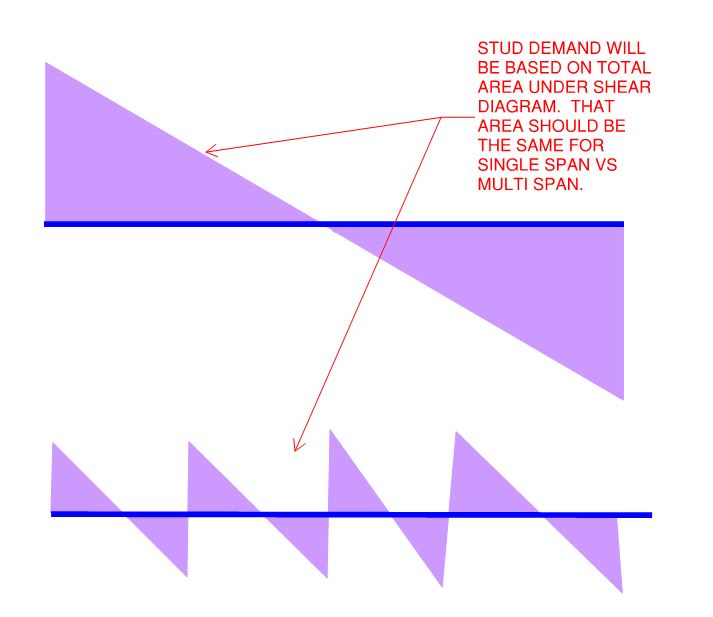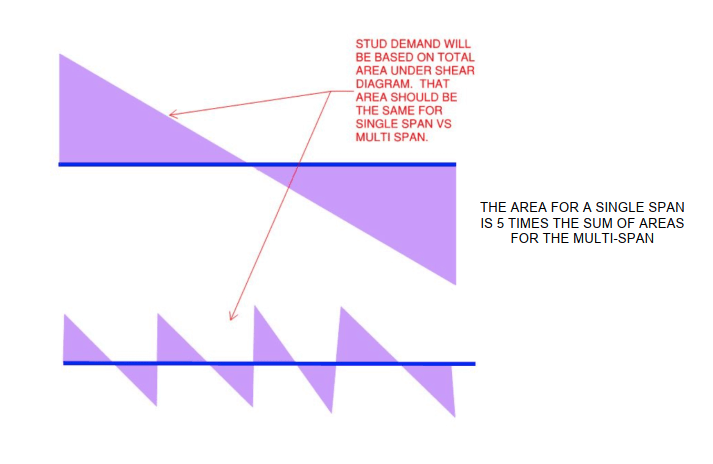Hi,
I'm working on a tied arch. The deck is supported by continuous stringers. The stringers are supported by floor beams spaced @ 25'. The floor beams are supported by hanger rods attached to the arch ribs.
AASHTO requires (2) checks for shear studs:
Fatigue: Use VQ/It to calc shear flow due to fatigue load and compare to stud capacity. No problem here.
Strength: Shear load = min of deck strength and Fy * Ag of the beam. Then No. of studs between point of max +M and adjacent 0 moment = shear load/stud capacity (for continuous spans there's a similar provision). I end up with a crazy number of studs (3 per row, rows @ 4"). I could see if it was just 1 or 2 spans, but considering the deck and beams are continuous over many spans it seems like studs throughout the bridge would work together in locking the beam and slab together. In other words 5 spans @ 20' would require wayy more studs than 2 spans @ 50' although both are 100' total. I suppose in a +M region the deck is in compression and the studs are pushed in one direction and in the adjacent -M regions the deck is in tension and the studs are pushed in the opposite direction so in that sense the studs are not all working together? Am I making any sense?
Thanks
I'm working on a tied arch. The deck is supported by continuous stringers. The stringers are supported by floor beams spaced @ 25'. The floor beams are supported by hanger rods attached to the arch ribs.
AASHTO requires (2) checks for shear studs:
Fatigue: Use VQ/It to calc shear flow due to fatigue load and compare to stud capacity. No problem here.
Strength: Shear load = min of deck strength and Fy * Ag of the beam. Then No. of studs between point of max +M and adjacent 0 moment = shear load/stud capacity (for continuous spans there's a similar provision). I end up with a crazy number of studs (3 per row, rows @ 4"). I could see if it was just 1 or 2 spans, but considering the deck and beams are continuous over many spans it seems like studs throughout the bridge would work together in locking the beam and slab together. In other words 5 spans @ 20' would require wayy more studs than 2 spans @ 50' although both are 100' total. I suppose in a +M region the deck is in compression and the studs are pushed in one direction and in the adjacent -M regions the deck is in tension and the studs are pushed in the opposite direction so in that sense the studs are not all working together? Am I making any sense?
Thanks



